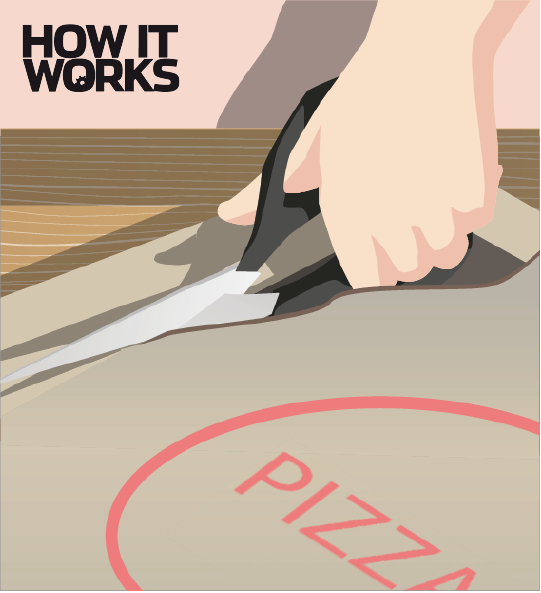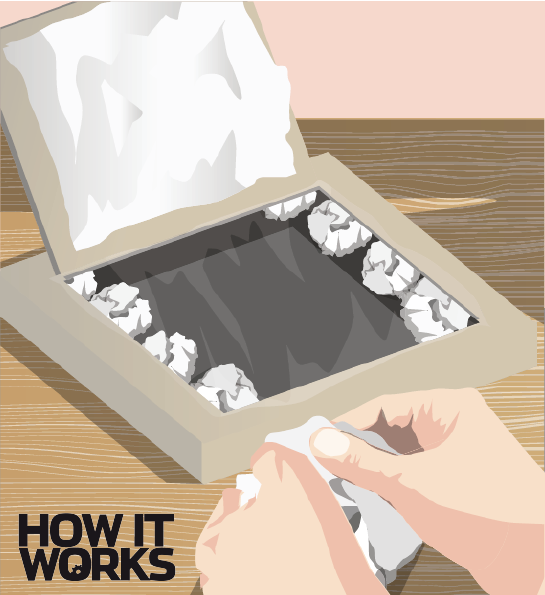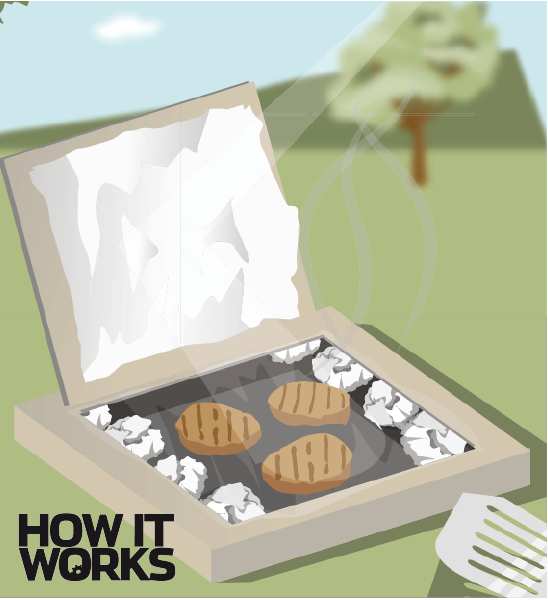How to build a solar oven
by Scott Dutfield · 14/04/2021
When the weather’s nice there’s nothing better than cooking outdoors. With this simple, cheap home experiment, you can cook your own food for free!
If you’re under 18, make sure you have an adult with you.

1. Modify your pizza box
With the help of an adult, cut into the lid of the pizza box, creating a large flap. To do this, cut along three sides of the box, making sure you leave enough cardboard around the edge of the lid. The flap you have created needs to be folded out so that it stands up even when the lid of the box is closed. Cover the flap’s inner side with aluminium foil and secure it with tape; this will reflect the Sun’s rays onto the food. A large, sturdy pizza box will work best and will last the longest.

2. Insulate the solar oven
Create an airtight window in your box using transparent plastic wrap, making sure it has a strong seal to prevent air entering or escaping. Using black construction paper, line the bottom of your box. To insulate your oven, take some newspaper and roll it up so that it can be placed in the bottom of the box, around the sides. Tape it down in order to create a border around the cooking surface. Make sure you pack in as much insulation as you can, this is key to trapping the necessary heat to cook your food.

2. Start cooking!
The optimum time to use your oven is when the Sun is at its strongest, which is typically between 11am and 3pm. Place it in direct sunlight, and adjust the aluminium coated flap so that it reflects the largest possible amount of sunlight onto the food. To maintain this flap angle, use a ruler to hold it in position. Alternatively, the entire box can be angled using a rolled up towel or another object. Allow plenty of time for your food to cook, and always check that it is cooked thoroughly before you eat it.
In summary
This type of oven is known as a collector box, as it functions by trapping the sunlight’s heat. This works because the foil layer reflects the Sun’s rays, bouncing them into the opening and through the plastic wrap. This heats the air trapped inside to a temperature in the region of 93 degrees Celsius (200 degrees Fahrenheit).
For more science and technology articles, pick up the latest copy of How It Works from all good retailers or from our website now. If you have a tablet or smartphone, you can also download the digital version onto your iOS or Android device. To make sure you never miss an issue of How It Works magazine, subscribe today!





